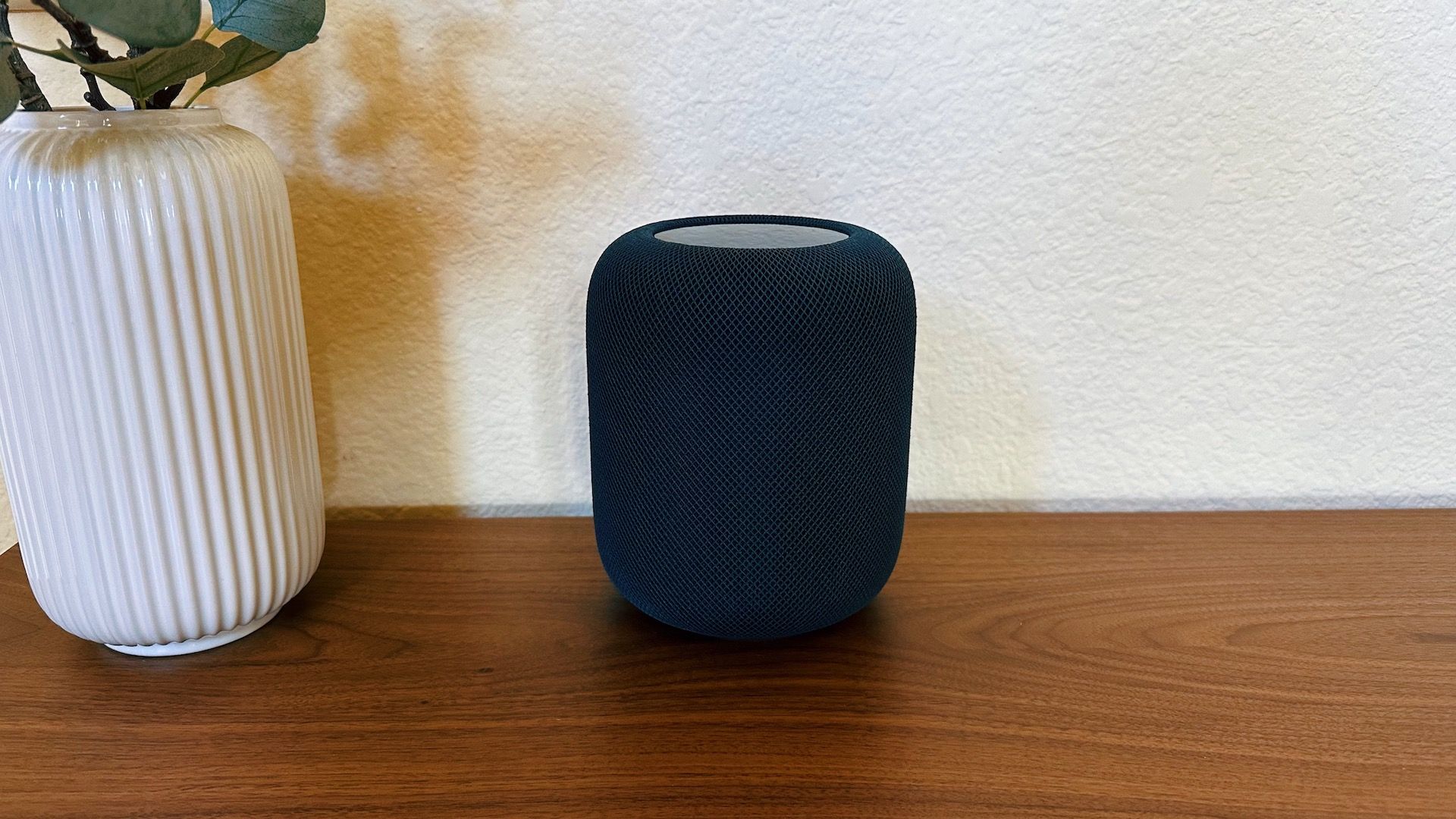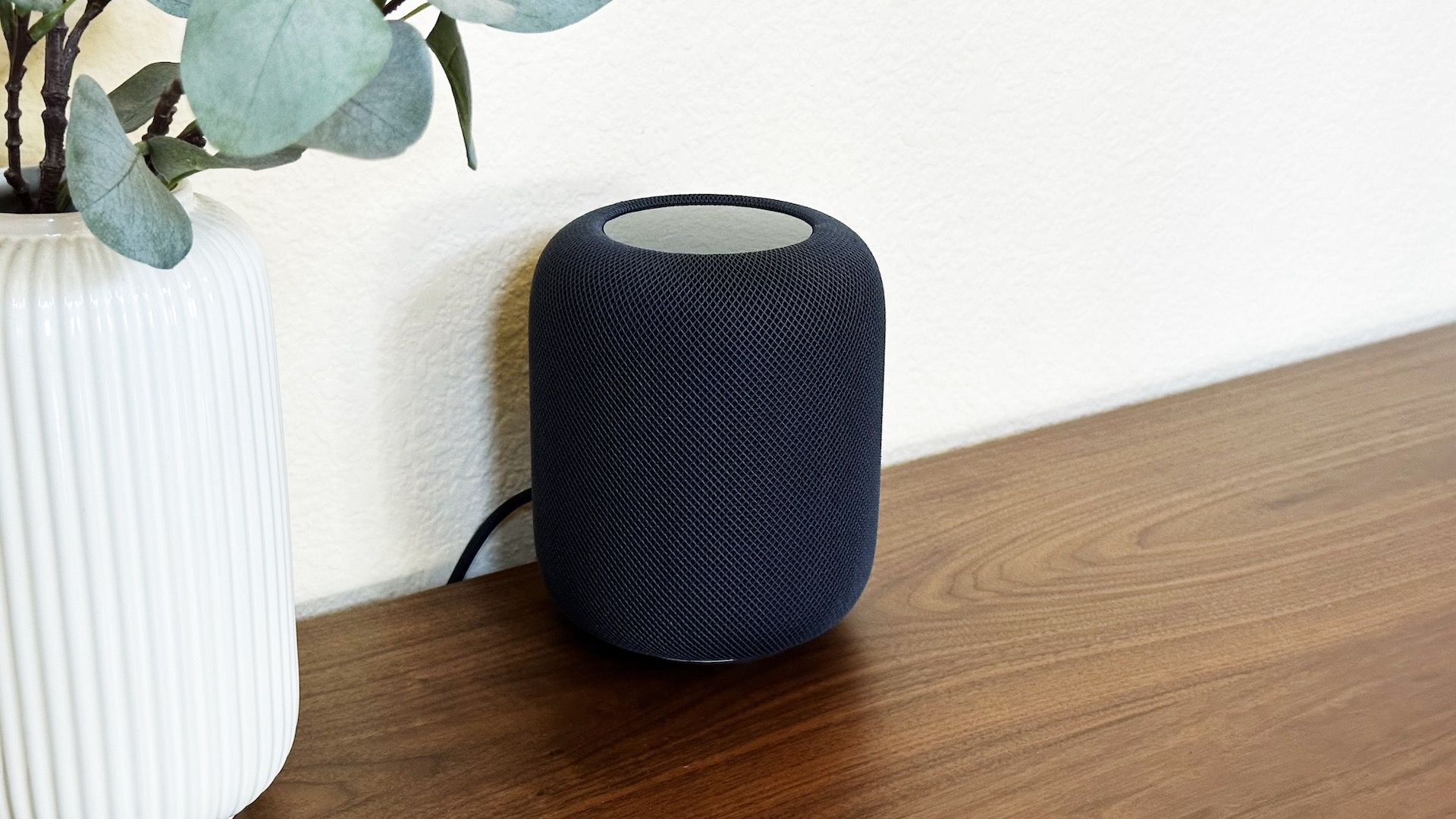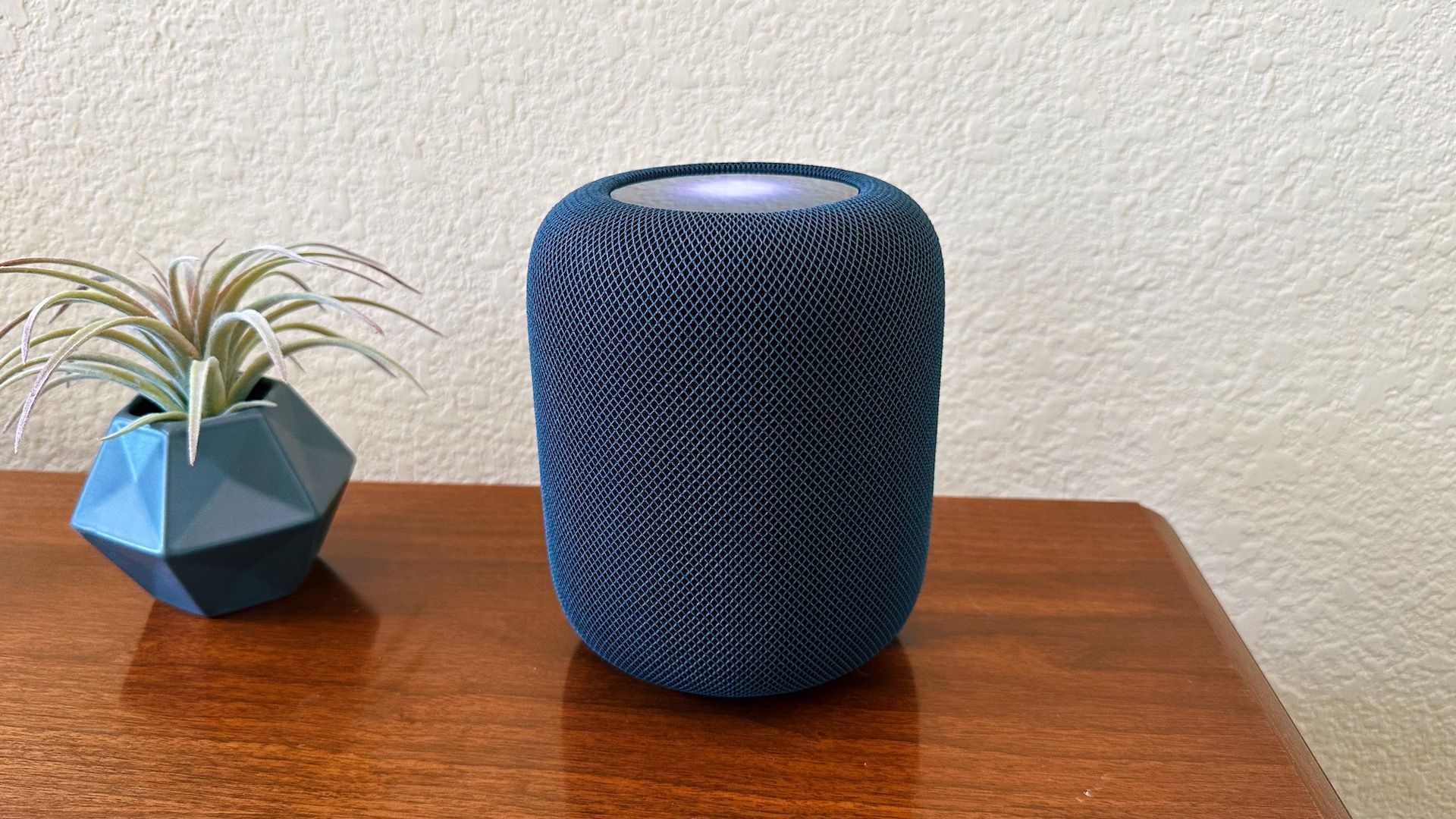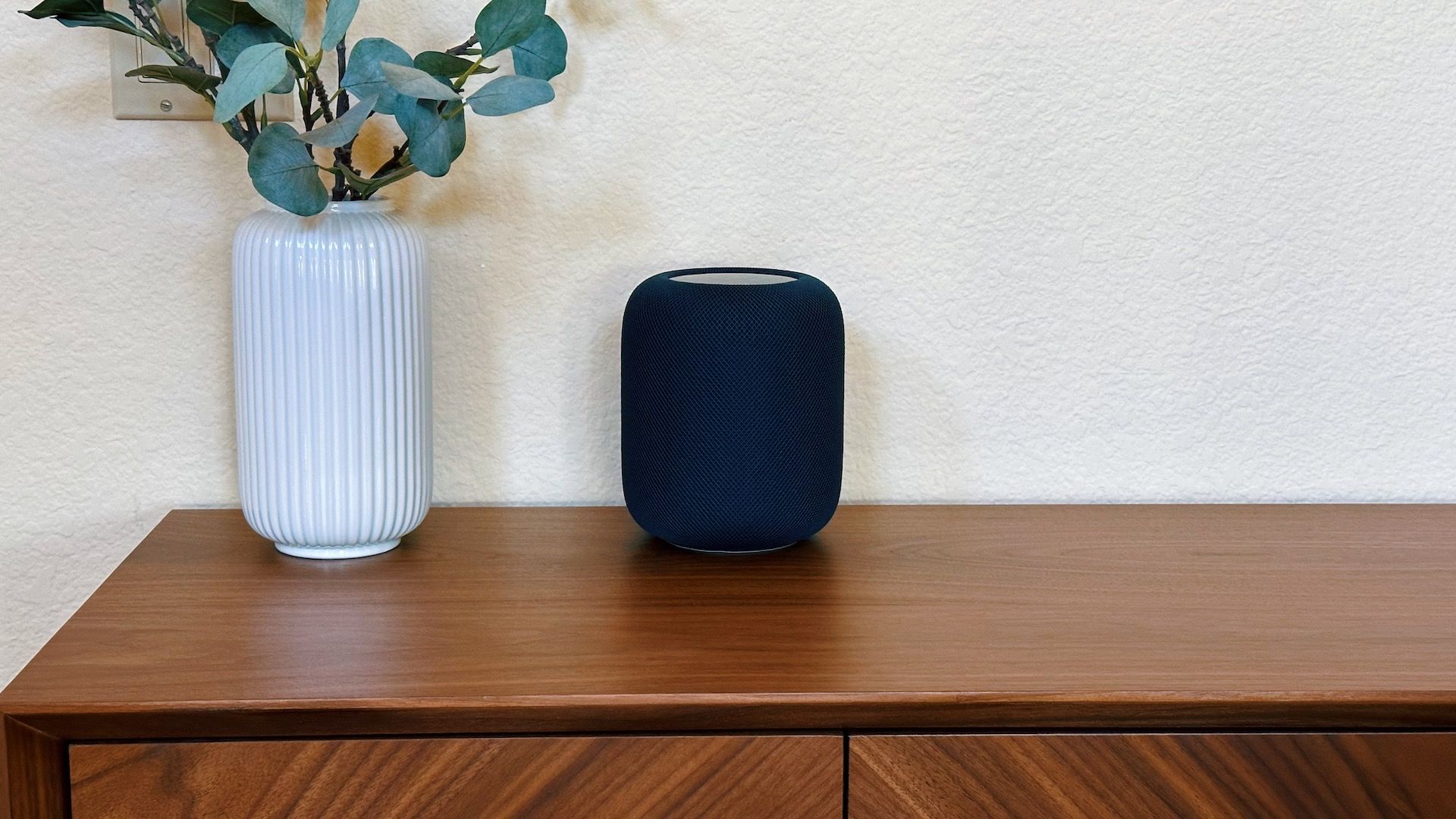Quick Links
Key Takeaways
- The second-generation Apple HomePod offers wonderful sound in a compact size, making it a great addition to any Apple user's home.
- The new HomePod is more responsive than the previous model, allowing for faster and more efficient use.
- While the Siri smart home functionality can be frustrating and the price is a bit high, the HomePod has the ability to connect to an Apple TV 4K, enhancing the home theater experience.
The second-generation Apple HomePod isn't a perfect speaker, and its $300 price makes its value skewed, but it does provide full music fidelity with easy-to-use features. And because of its convenient total package, it's a worthy addition to any Apple user's home who has a budget for it.
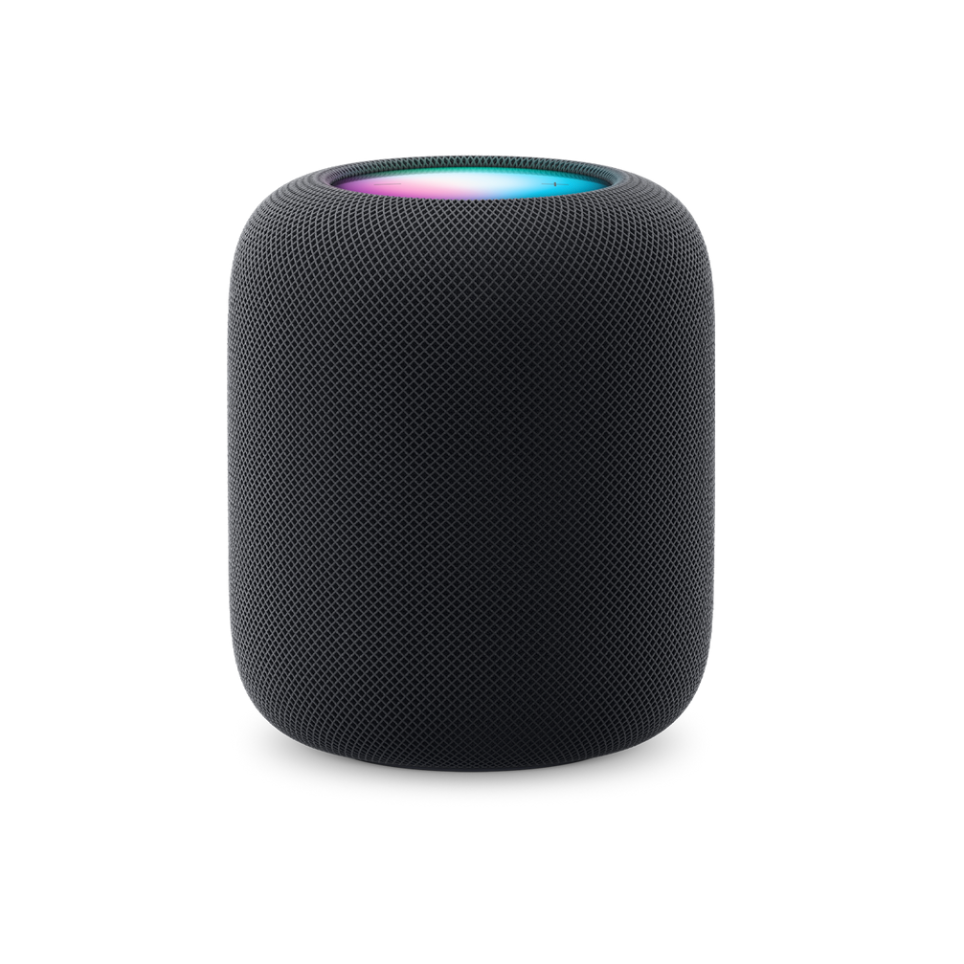
Apple HomePod (2nd generation)
- Brand
- Apple
- Dimensions
- 6.6 x 5.6in (16.76 x 14.22cm)
- Weight
- 5.16lbs (2.34kg)
- Audio
- 4in high-excursion woofer, array of five horn-loaded tweeters, four-microphone design
- Connectivity
- 802.11n Wi-Fi, Bluetooth 5.0, Thread, Ultra Wideband chip for device proximity
- SMART ASSISTANTS
- Siri
- Sensors
- Sound recognition, temperature and humidity, and accelerometer
- Wonderful sound in a compact size
- Faster responsiveness than the previous model
- Can connect to an Apple TV 4K
- Siri smart home functionality can be frustrating
- Price is a little high to make it a great value
HomePod Design and Style: Almost Identical Visually
Whether you can tell or not, the HomePod 2 (announced in January 2023) is actually completely different than the first one. The size, weight, and design of the new HomePod did each change from the previous model. The key point is that those things didn't change enough to make a difference one way or another. The power cable is now easier to remove on this new one, but again, not a factor in whether to purchase or not.
The few media controls all stayed the same. Tap on the top multi-color screen to toggle play and pause. Double-tap to skip songs. Or, press the plus and minus buttons to adjust the volume.
The speaker is available in white or midnight colors. The midnight color on the iPhone and Apple Watch has a tendency to look blue in bright light. I didn't see the same thing here. In every lighting condition, the midnight color only looked black to me. You should consider it black when deciding between it and the white one.
Sound: Great in the Right Spaces
In addition to the minor exterior changes from the first version of the HomePod, there are internal sound changes as well. There are fewer audio components inside, including two fewer microphones, but, surprisingly, it wasn't noticeable. Siri heard me say commands from anywhere in the room and even from the next room over.
I spent a lot of time playing music and then switching from the original HomePod to this new one. The new model sounded very similar, and the times it didn't sound basically the same, it seemed to have slightly more resonance.
I went through modern hits like "Blinding Lights" by The Weeknd, "Don't Start Now" by Dua Lipa, and "Summertime Magic" by Childish Gambino, and the speaker handled these punchy pop hits beautifully.
Acoustic folk songs were bright and delicate, and jazz songs had a rich mid-range. The HomePod was also able to handle the wide-ranging eclectic "The Mandalorian" theme from Ludwig Goransson.
While this new HomePod was a powerhouse of sound for its size, it had the best performance in smaller rooms. For example, in a 14- x 12-foot room with a 10-foot ceiling, the HomePod boomed and sounded sparkling. When I used it in a larger family room that had a 25-foot tall ceiling, the HomePod struggled to shine in the same way. As the volume was raised, the bass failed to pack the same punch it did when it could better reverberate off the walls.
The HomePod, even from the first version, has used its microphones to automatically calibrate its sound. This happens automatically with no input needed from listeners. While it's hard to confirm, I suspect the HomePod may be trying to overcompensate in my larger space.
Listening to music in the cavernous room wasn't a deal breaker or even bad, but it merely exposed that the HomePod had its limits. For comparison, a Sonos Five handled the same space with a more robust sound.
One way to combat any fatigue of a single HomePod in a large open space is to add a second one and create a stereo pair. I tried that, and the sum was certainly greater than the individual parts.
Buying two HomePods for a $600 sound system isn't outrageous. It sounded amazing. But the more practical use of the speakers would be to use them connected to an Apple TV 4K for home theater sound. Doing this yielded great audio results, but the setup process wirelessly to an Apple TV 4K box can be frustrating to troubleshoot if things don't work the first time.
I think there are two minor things Apple could do to make a big difference. First, adding some kind of user-adjustable EQ or insight into its automatic room calibration could help audio edge cases. Second, a visual indicator of whether HomePod is delivering Dolby Atmos, 5.1, or 7.1 surround sound when connected as home theater speakers would go a long way.
Adding those software features wouldn't significantly alter the HomePod's performance, but it would make the speaker more compelling and usable for those who do buy one.
Smart Home Features for a Smart Speaker
Siri is not any different on this HomePod than the assistant is on the first-generation HomePod or the HomePod mini. Siri is faster, however, on this new device which does make the feature a little more compelling than it has been on the other products.
My so-called smart home with HomeKit-enabled Philips Hue lights and smart switches went through an existential crisis over the past several months, with certain elements not responding to voice commands as they have in the past.
Even with a new HomePod in the house, those same issues taunted my family. Asking Siri to turn on or off the living room lights was still hit or miss. All of us in the house did notice that the voice assistant responded faster, and commands were performed with more pep and gusto. That's likely thanks to the HomePod using an S7 Apple Silicon chip---the same one as in an Apple Watch Series 7.
The S6, S7, and S8 chips perform at about the same speeds and are a step up from the S5 chip that's in the HomePod mini. It might seem strange that the chip in a smartwatch is also powering wireless speakers, but the S5 in the mini was a step up from the first-generation HomePod in performance. The S7 in this new HomePod wasn't a slouch in rapid response times for queuing up music or answering questions.
The 2023 HomePod also has a temperature and humidity sensor inside so it can perform automations based on that information. Want the Apple Home app to trigger a task when a room reaches a certain temperature? HomePod can now do that (and so can the mini following a software update). That worked well and was neat, but ultimately felt minor in the scope of the $300 price tag.
Another nice addition is the Thread radio inside used to communicate with Matter smart home products. As of now, those communications happen behind the scenes, so there's little to test, but it could provide real (subtle) utility to a home, either now or in the future.
This second-gen HomePod was better at performing smart home tasks than the previous model, but that shouldn't be the sole purpose of buying this product---more of an additional benefit---as its focus is clearly on playing music.
Should You Buy the New Apple HomePod?
The number of people who should go out and buy the newest Apple HomePod is small. There are other smart speakers for less money---that still provide solid audio performance. Rather, this second-generation HomePod is a breath of fresh air for Apple centrists who want that all-in-one audio system in an easy-to-use package.
The other candidate for this HomePod is someone who's dabbled around with the HomePod mini and likes what it offers but wants something more substantial and capable of more volume and bass. It got loud and thumped, usually without breaking a sweat. Unfortunately, it just isn't the best value because of its high price.

